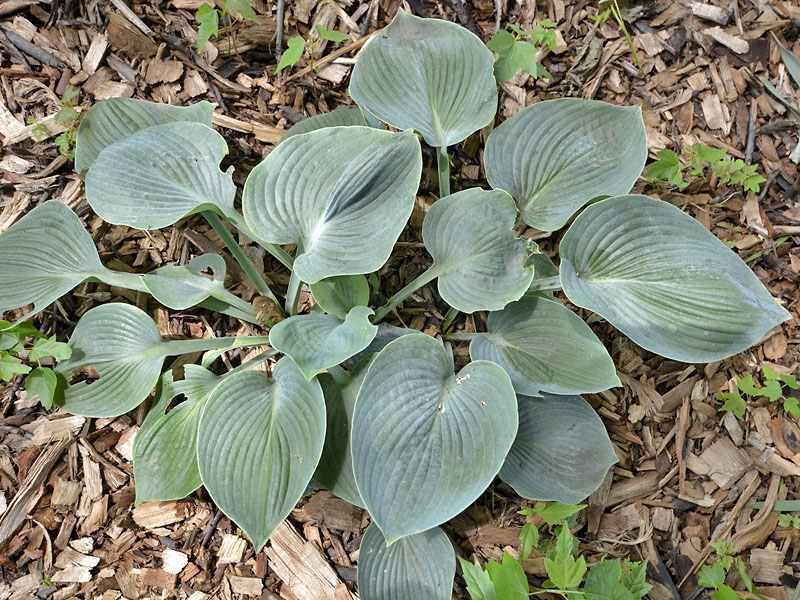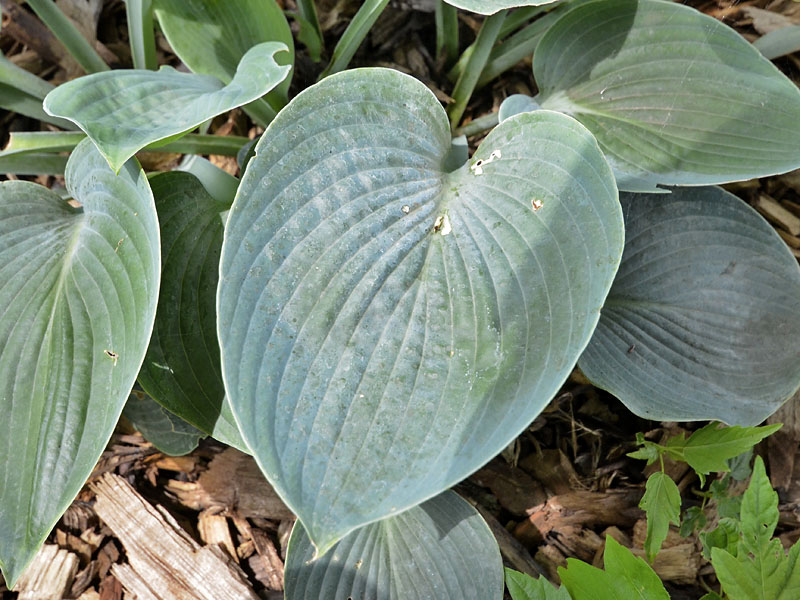
Perennials > Hosta > Hosta 'Abiqua Drinking Gourd'
Hosta
'Abiqua Drinking Gourd'
Abiqua Drinking Gourd Hosta
Origin: Walden-West 1989. (H. 'Tokudama' x H. sieboldiana 'Elegans'.)
| Family |
| Asparagaceae |
| Genus |
| Hosta |
| Cultivar |
| 'Abiqua Drinking Gourd' |
| Category |
| Perennials |
| USDA Hardiness Zone |
| 1a - 6a |
| Canadian Hardiness Zone |
| 0a - 5b |
| RHS Hardiness Zone |
| H7 |
| Temperature (°C) |
| -51 - (-21) |
| Temperature (°F) |
| -60 - (-5) |
| Height |
| 50 cm |
| Spread |
| 90 cm |
Photographs
Description and Growing Information
Flowering Period
| Cultivation |
| Grow in partial shade in any fertile soil that has been enriched with well-rotted organic manure. A pH of 6-7 is preferred, and a continuous supply of moisture is critical for optimum performance. |
| Growth |
| Medium |
| ID Characteristic |
| Leaf cupping as deep as 10 cm. |
| Pests |
| Snails and slugs are the primary pests, and rabbits and deer may be a problem as well. |
| Habitat |
| Horticultural origin. |
| Leaf Description |
| Thick, rich frosty dark blue-green, 21 x 21 cm. |
| Flower Description |
| Tubular, lily-like, white, on an upright, leafy, 55 cm scape. |
| Notable Specimens |
| The A.M. Cuddy Gardens, Strathroy, Ontario, Canada. Royal Botanical Gardens, Burlington, Ontario, Canada. |
| Propagation |
| Propagate through division of clumps, although clumps should be left undisturbed for at least 3 years in order to allow the leaves to reach maturity. Plant in spring or (in areas with milder winters) autumn, allowing the roots to soak overnight in a weak solution of liquid fertilizer first. |


